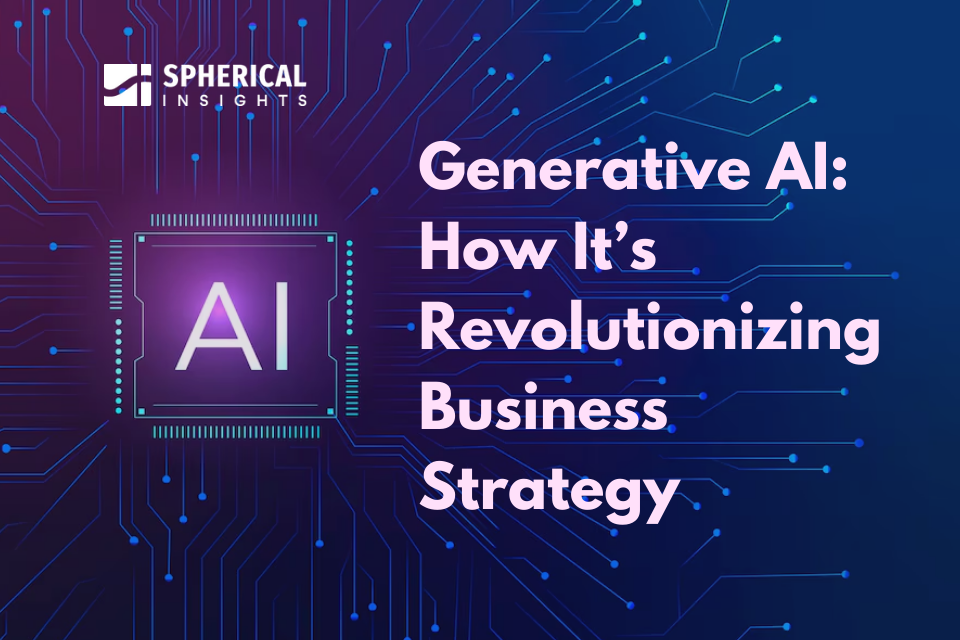Generative Artificial Intelligence: Use Cases Transforming Businesses

Discover how generative artificial intelligence is revolutionizing businesses and its practical applications that offer competitive advantages.

Discover how generative artificial intelligence is revolutionizing businesses and its practical applications that offer competitive advantages.
Key Points
Generative artificial intelligence is revolutionizing the way we do business, opening up a vast array of untapped opportunities. In this article, we will show you how generative AI is impacting companies and various sectors of the economy through real-life examples, practical applications, and optimal implementation methods.
Generative artificial intelligence, or generative AI, is a branch of artificial intelligence focused on creating original content. This can include text, images, audio, or video based on data or commands provided to the system. Advanced deep learning models, such as neural networks and generative adversarial networks (GAN), form the core of these systems. They learn patterns from vast amounts of data and generate new content that mimics or expands upon these patterns (IT Masters Mag, Adevinta, Red Hat).
This ability to create distinguishes generative AI from traditional AI, which is primarily used for classifying or predicting based on existing data. Instead, generative AI can produce entirely new data such as text, images, music, and more. Its main applications include chatbots, virtual assistants, image generation, video editing, code creation, and scientific simulations.
Generative AI offers several advantages for companies. The primary benefit is the automation of complex tasks, which not only adds value by accelerating creative processes but also reduces costs and optimizes resources. Generative AI can help businesses innovate faster, minimize human errors, and deliver personalized experiences to each customer (IT Masters Mag, Red Hat).
Companies that utilize generative AI outperform competitors relying on traditional methods in terms of efficiency and scalability. Unlike conventional approaches, processes powered by generative AI can improve over time as they learn and adapt.
Generative AI is changing the game across various sectors, creating new opportunities and challenges. To illustrate this, here are some real-life examples from different industries:
Each of these examples demonstrates the impact and potential of generative AI across various sectors of the economy.
This concludes the first half of our analysis on generative AI and its impact on business. In the second part of the article, we will discuss the main generative AI tools used in businesses, how to implement generative models, and explore future trends and opportunities. Don’t miss it!
There are a variety of tools designed to harness the power of generative AI. Companies adopt these tools and integrate them into their internal processes to benefit from the unique capabilities that generative AI offers.
Some of the most common tools for text generation include ChatGPT and Copilot, both developed by OpenAI and Microsoft. These powerful solutions enable automated text creation for chatbots, document drafting, code writing, and data analysis (Wikipedia).
In the creative sector, tools like DALL-E from OpenAI generate unique images from textual descriptions. Midjourney, on the other hand, enables the creation of custom videos and images for marketing campaigns (Wikipedia).
An innovative tool in the realm of multimodal integration is Gemini from Google. This solution aims to combine text, images, and other types of information into a single interface to automatically generate content, merging various data types in a coherent and aligned manner (Wikipedia).
Generative AI can significantly transform business operations and strategy, but its implementation should be careful and well thought out. Here are some steps to integrate generative models into your business:
Implementing generative AI should be done responsibly and ethically. Content generation must be approached carefully to ensure the privacy and security of user data (IT Masters Mag, Red Hat).
Generative AI is continuously evolving, and the future outlook is incredibly exciting. Here are some of the most promising trends expected in this field:
Generative AI is proving to be a powerful asset for businesses across a variety of sectors, making creative tasks and personalized content accessible to everyone. As such, the range of use cases for generative AI will continue to grow as more companies adopt and harness the potential of this incredible technology.
Adopting generative AI requires a thoughtful and careful approach, but companies that invest the necessary effort will discover numerous opportunities to innovate, boost efficiency, and personalize the customer experience in ways never before possible.
At Privinia, we firmly believe in the transformative potential of generative AI. We encourage all our readers to consider how they might benefit from incorporating it into their business strategies starting today.
Generative AI is a branch of artificial intelligence focused on creating original content—whether that be text, images, audio, or video—based on provided data or commands.
Generative AI offers several benefits for businesses, including the automation of complex tasks, accelerated creative processes, cost reduction, resource optimization, and highly personalized customer experiences.
Generative AI is currently impacting various sectors such as the creative industry, business operations, healthcare, education, and marketing.
Many generative AI tools are in use today. Among the most popular are ChatGPT, Copilot, DALL-E, Midjourney, and Gemini.
Implementing generative AI in a business involves assessing your needs, choosing the right tools, training your team, and continuously monitoring and adjusting the outcomes to ensure optimal performance.
The future of generative AI looks promising, with anticipated expansions into automated product design, industrial simulations, synthetic data creation for testing, and advanced personalization in digital services.